Abstract
1. The flow of Ringer solution or paraffin oil from an infusion reservoir into the cavity of the knee (stifle) joint was measured in anesthetized rabbits, as intraarticular pressure was progressively elevated from its intrinsic slightly subatmospheric value to +25 cm H2O. 2. Paraffin oil did not penetrate the tissues lining the joint cavity, yet a continuous flow of oil occurred into the joint at pressures over +2 cm H2O. It was concluded that the joint investment behaved as a visco-elastic tissue. 3. Trans-synovial flow of Ringer solution was calculated by correcting the observed inflow for visco-elastic expansion of the joint capsule. At intra-articular pressures +2 to +9 cm H2O, trans-synovial flow increased at an average rate of 0.49 microliter min-1.cm H2O-1. The hydraulic conductivity of the synovium was therefore similar to that of subcutaneous connective tissue. At around +9 cm H2O, the 'breaking pressure', the slope of the pressure-flow relationship increased by almost sixfold to 2.81 microliter min-1.cm H2O-1. 4. Changes in joint visco-elasticity, synovial surface area, blood pressure, colloid osmotic pressure of plasma and of joint fluid, and inflammation were excluded as explanations of the marked increase in rate of fluid absorption, which is tentatively attributed to increases in synovial hydraulic conductivity. Some physiological and clinical implications of the data are discussed.
Full text
PDF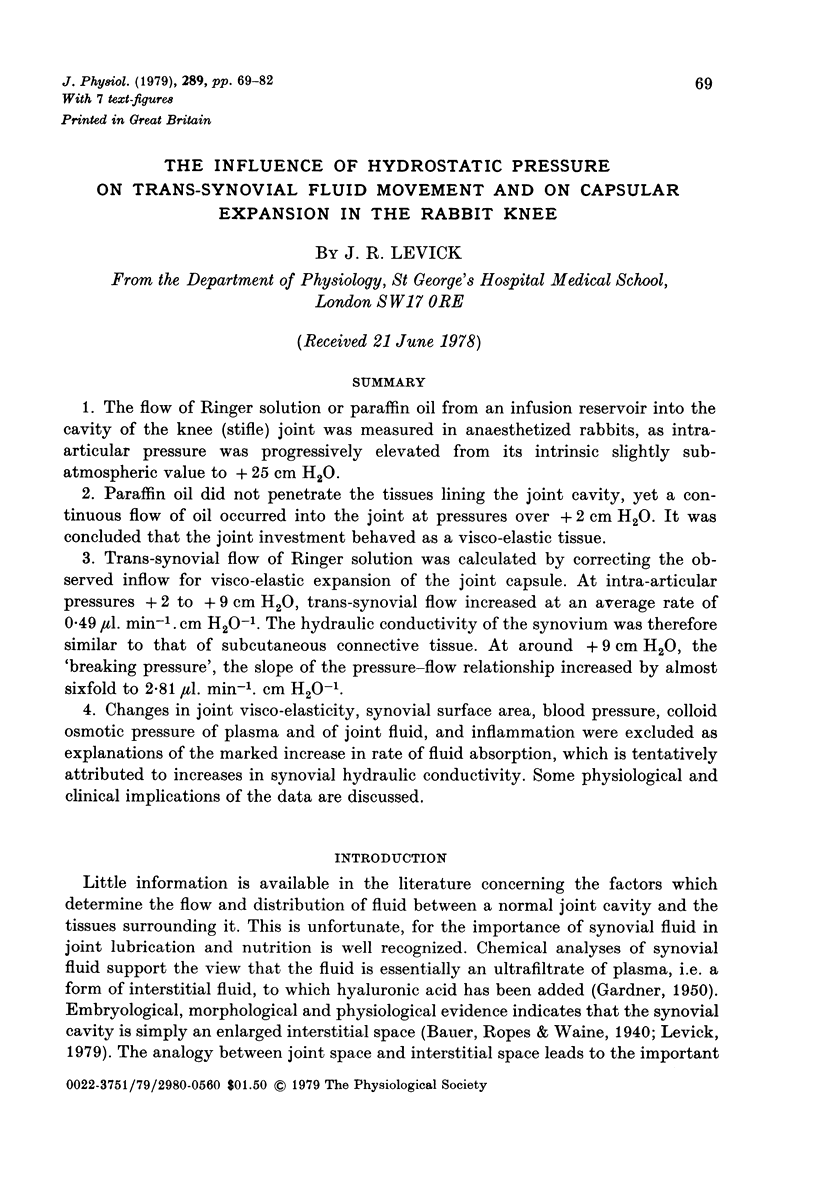
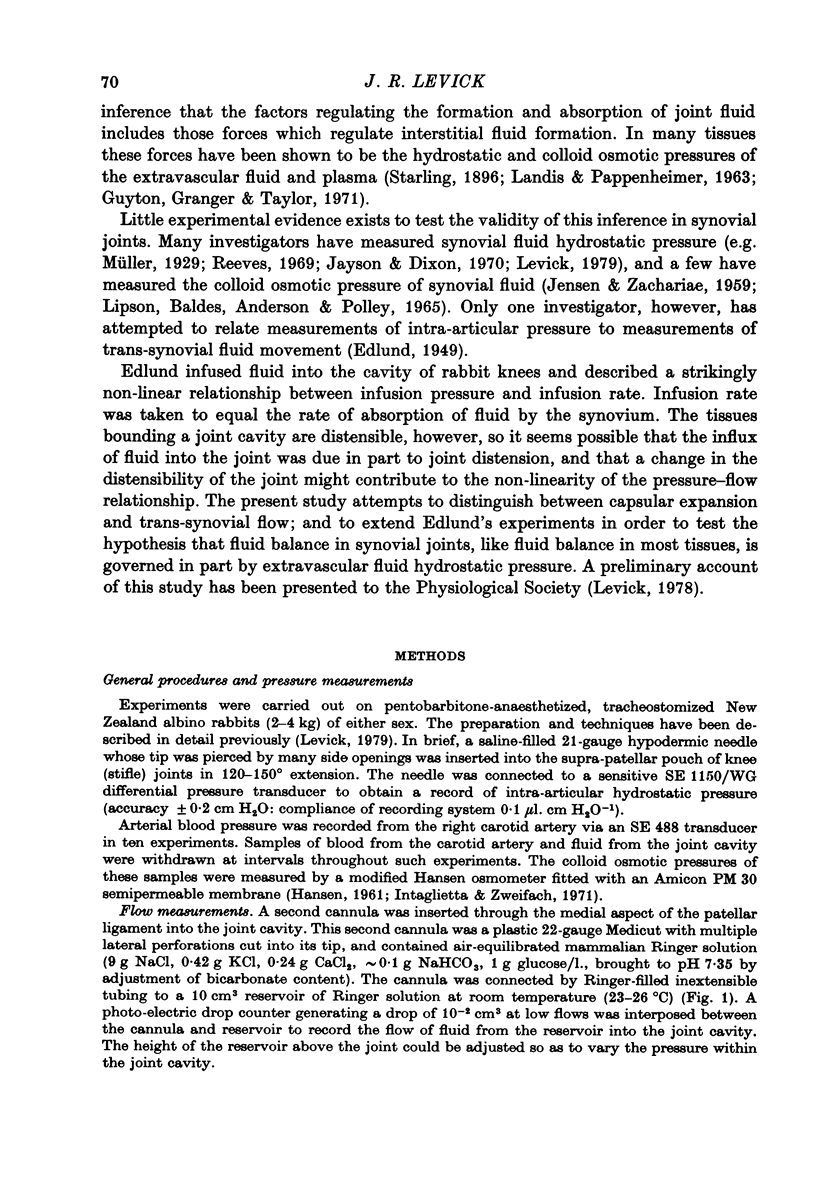
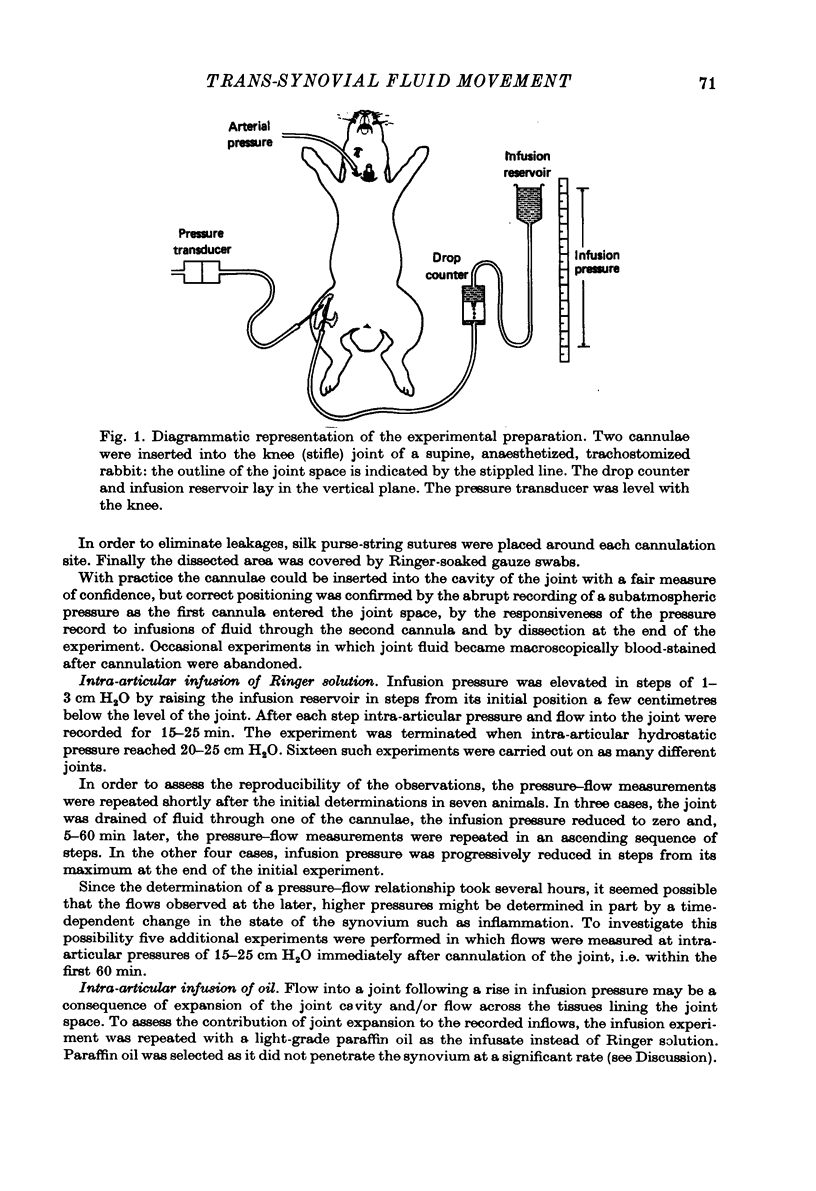
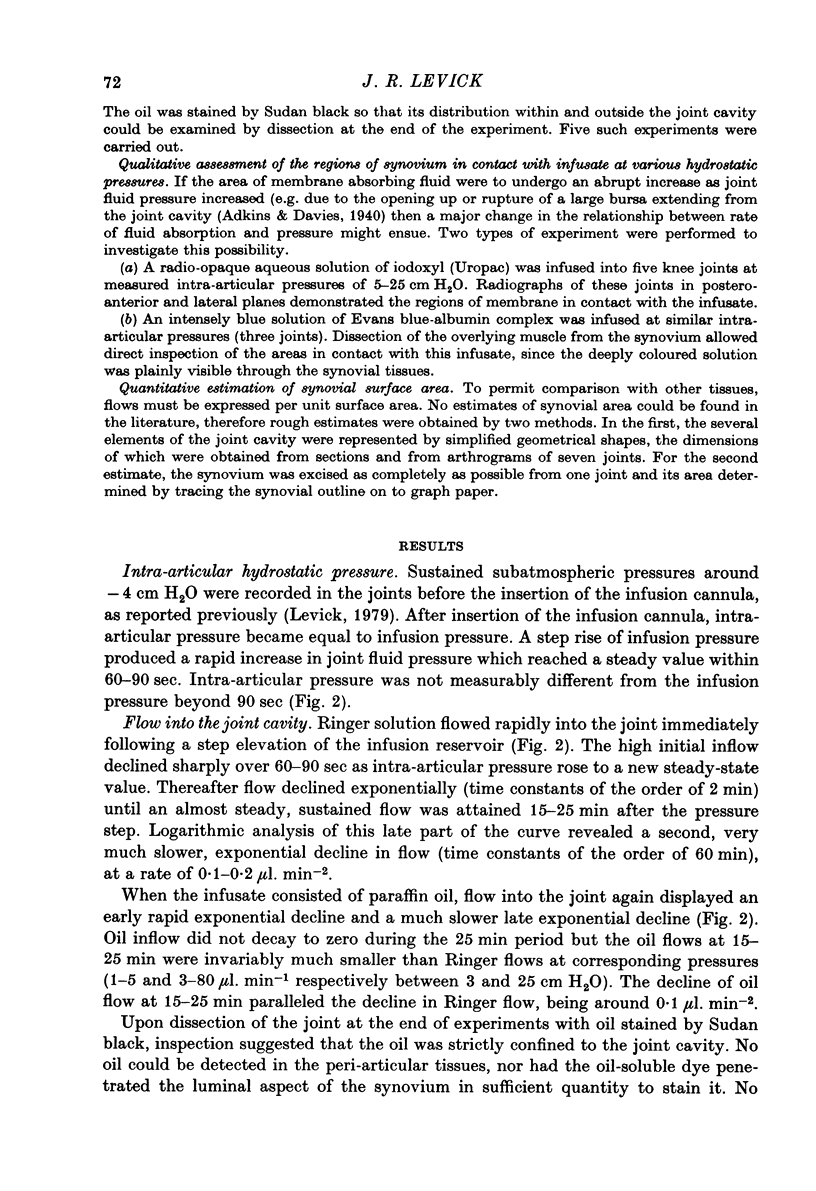
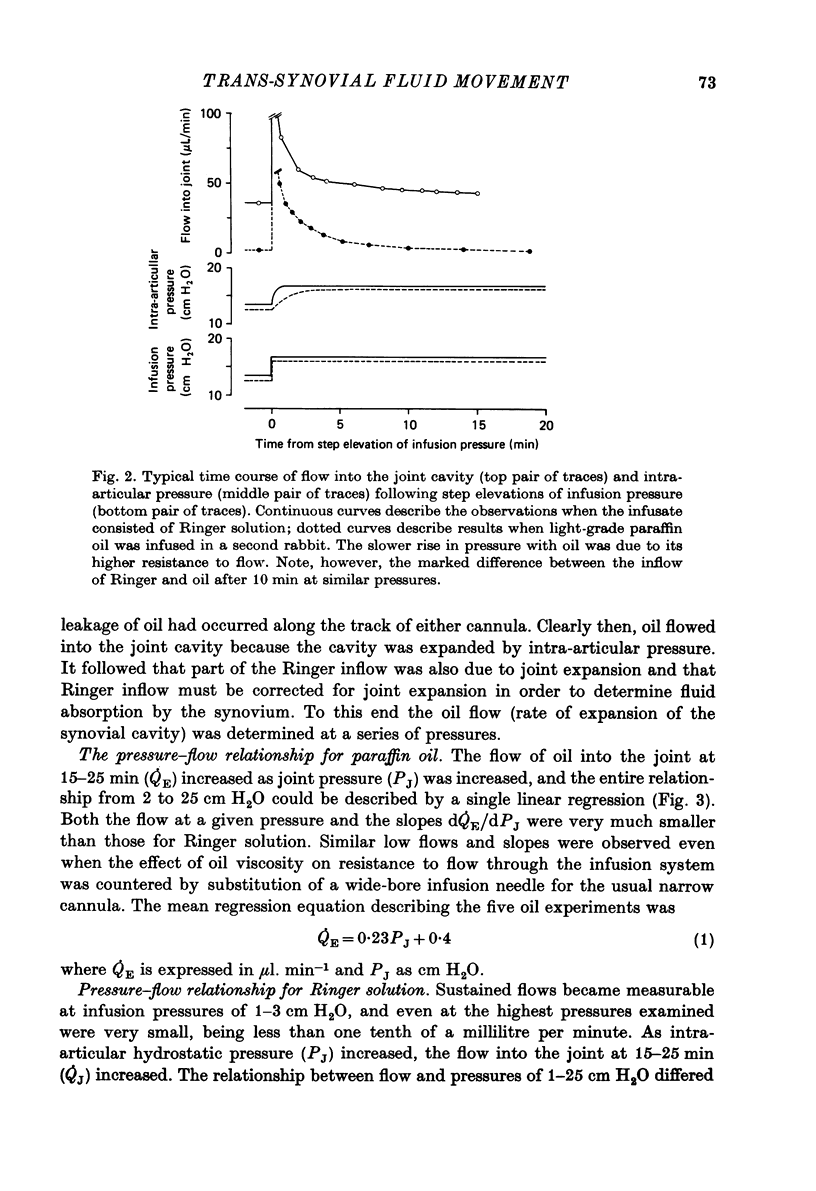
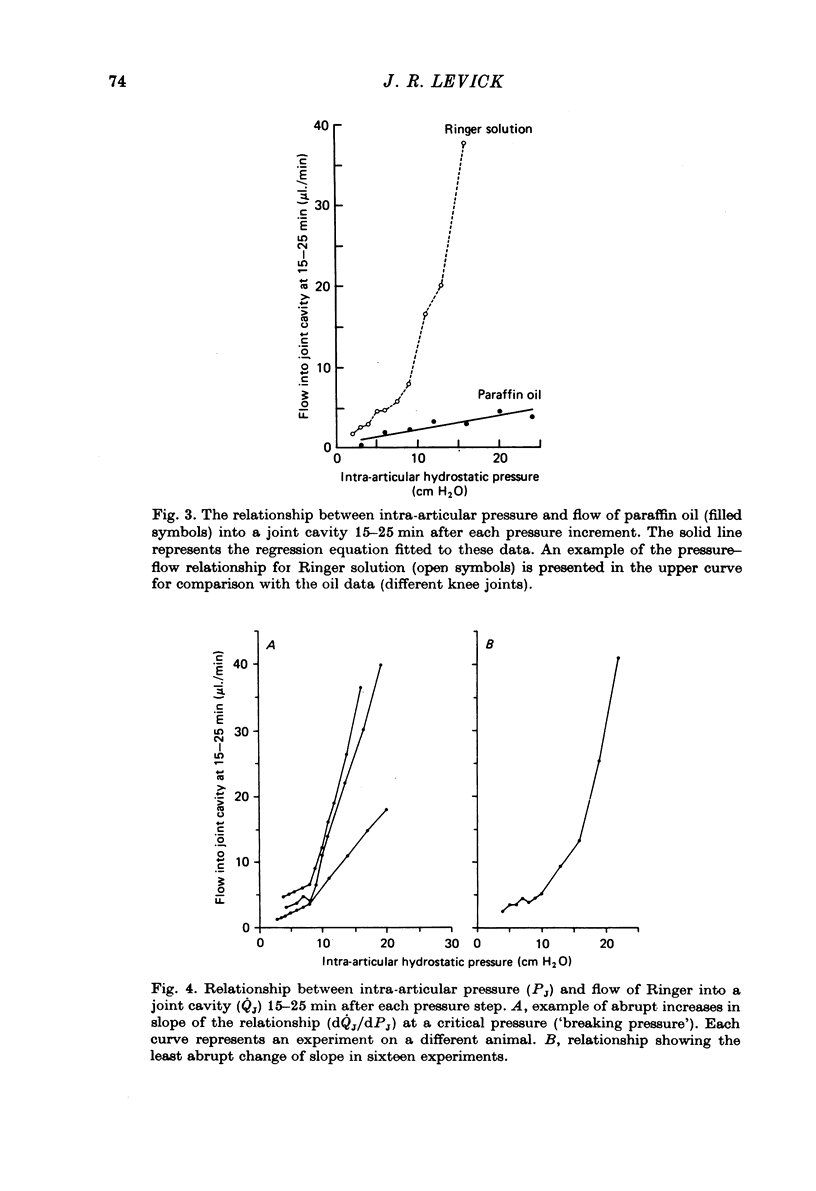
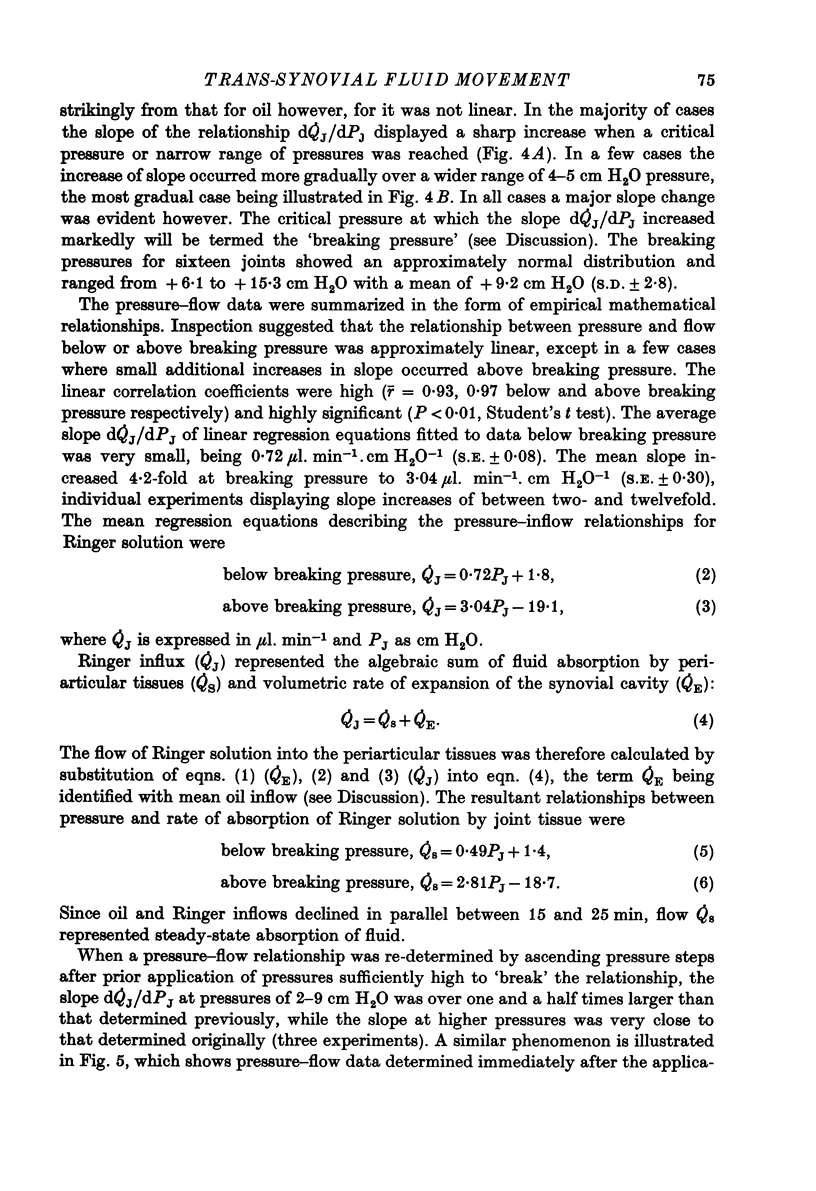

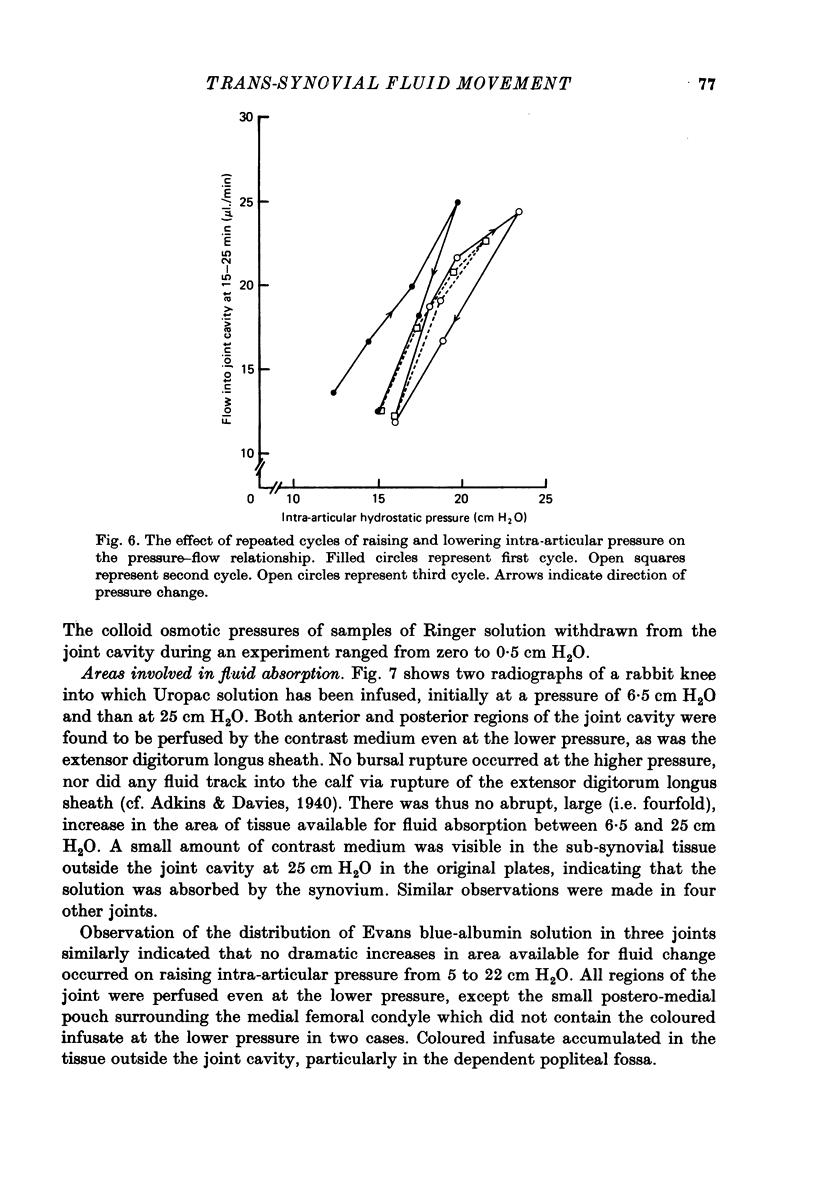
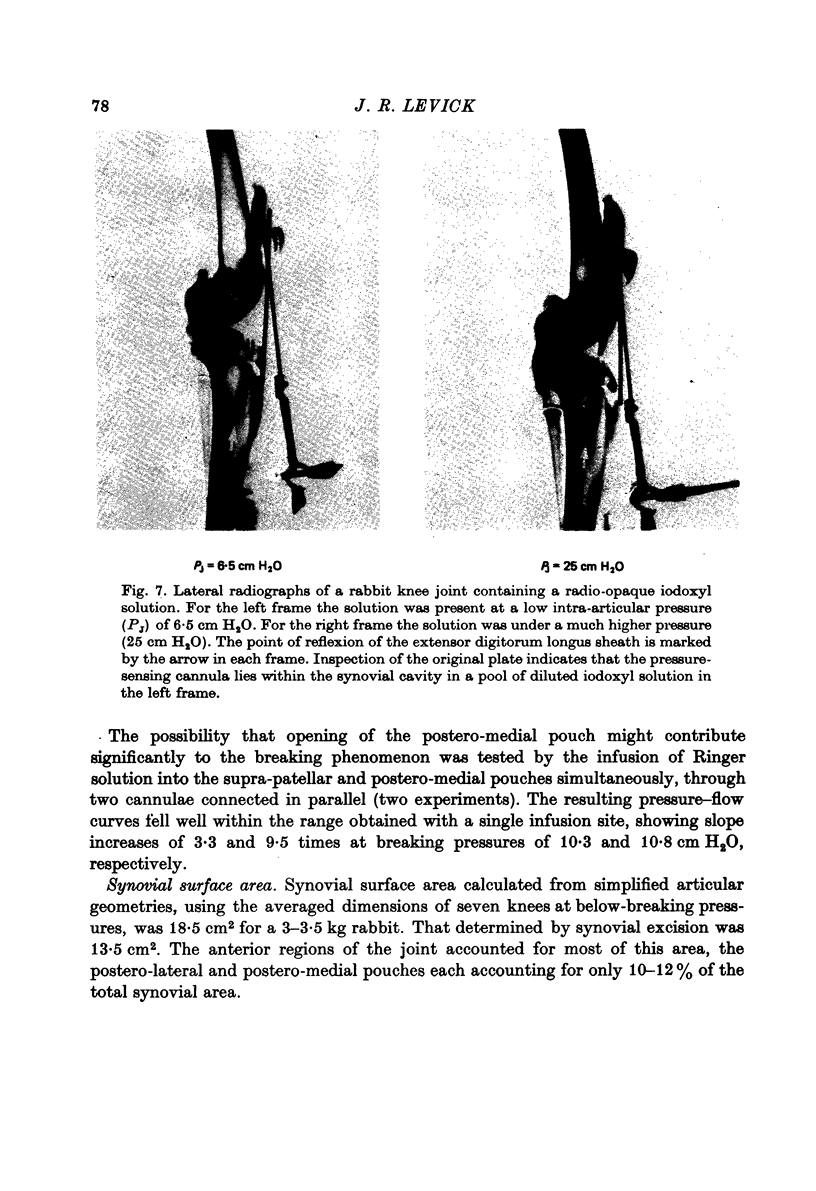
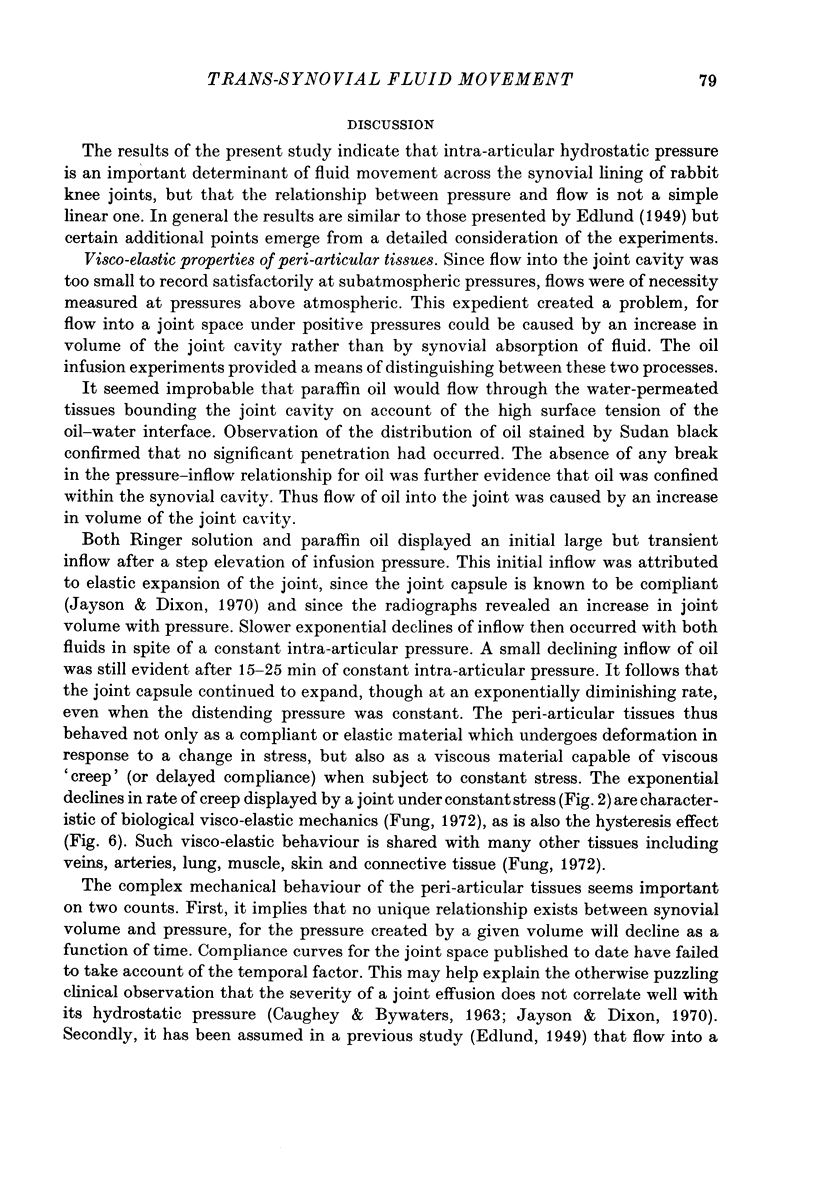
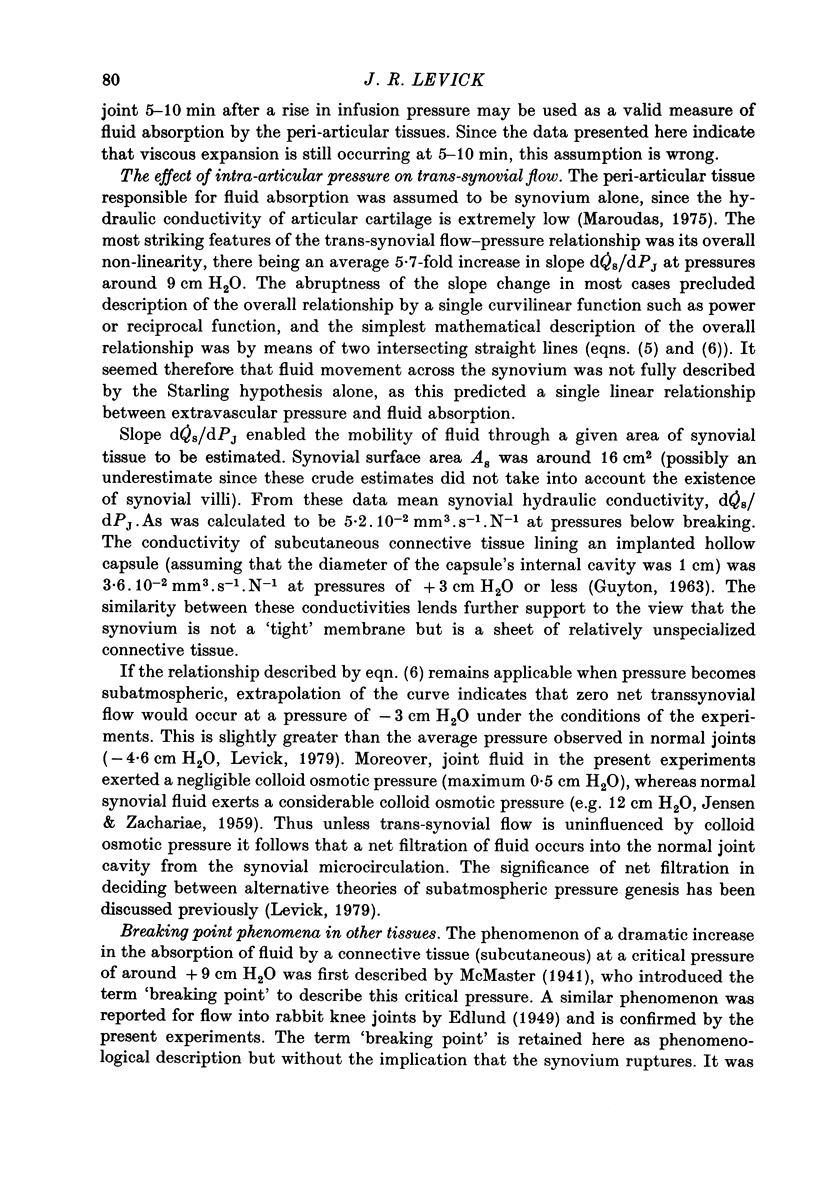
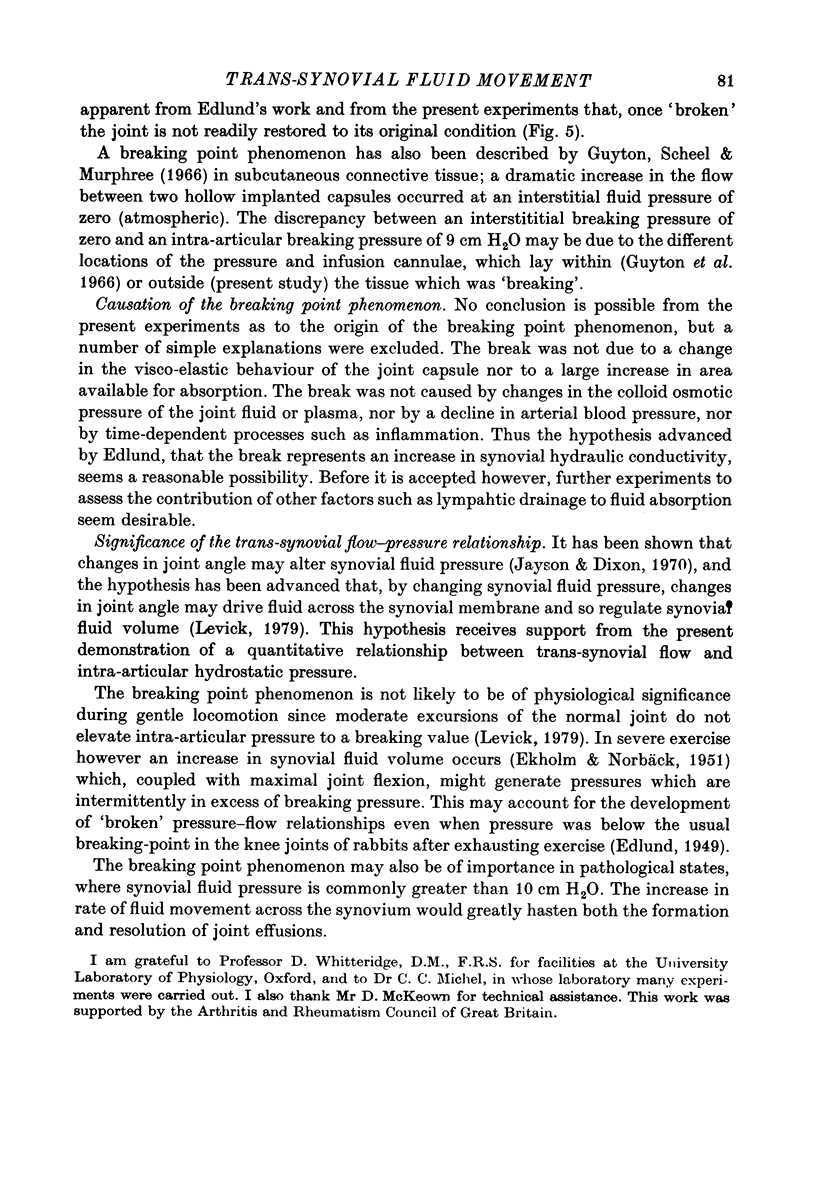
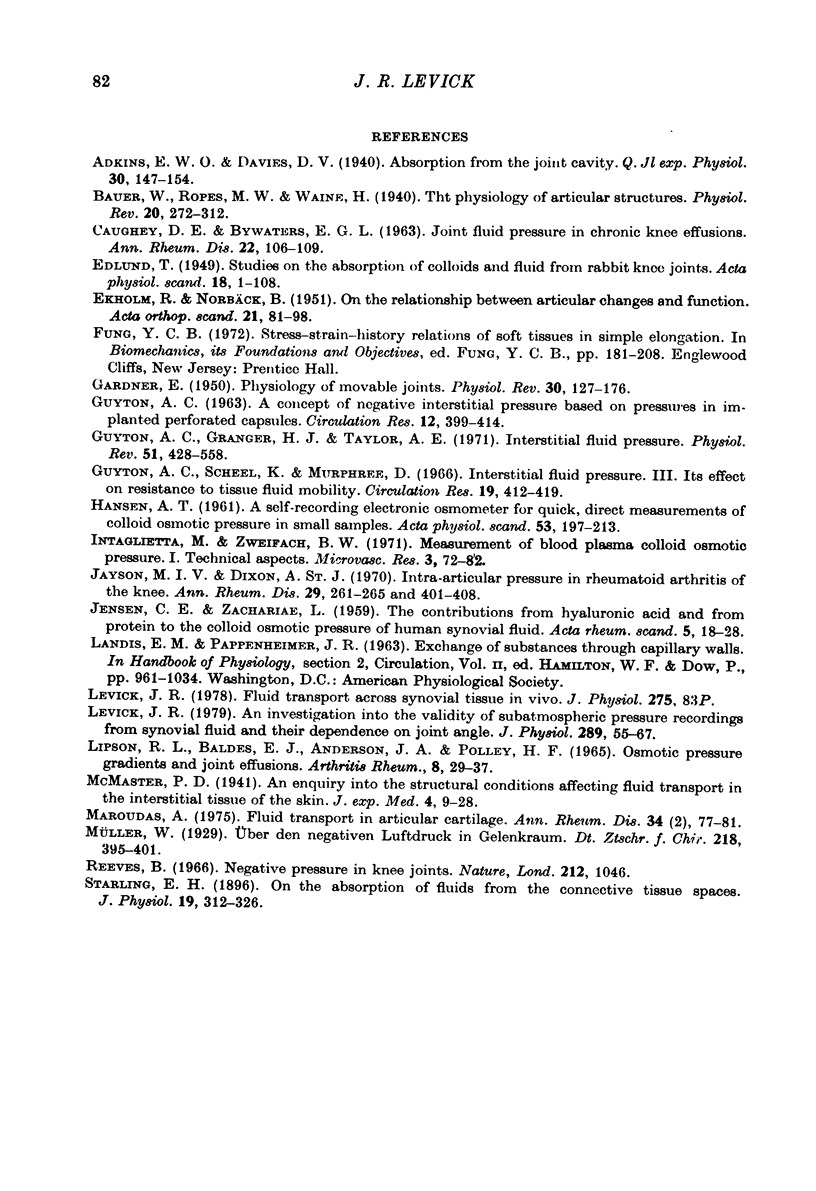
Images in this article
Selected References
These references are in PubMed. This may not be the complete list of references from this article.
- CAUGHEY D. E., BYWATERS E. G. Joint fluid pressure in chronic knee effusions. Ann Rheum Dis. 1963 Mar;22:106–109. doi: 10.1136/ard.22.2.106. [DOI] [PMC free article] [PubMed] [Google Scholar]
- EKHOLM R., NORBACK B. On the relationship between articular changes and function. Acta Orthop Scand. 1951;21(2):81–98. doi: 10.3109/17453675109024145. [DOI] [PubMed] [Google Scholar]
- GARDNER E. Physiology of movable joints. Physiol Rev. 1950 Apr;30(2):127–176. doi: 10.1152/physrev.1950.30.2.127. [DOI] [PubMed] [Google Scholar]
- GUYTON A. C. A concept of negative interstitial pressure based on pressures in implanted perforated capsules. Circ Res. 1963 Apr;12:399–414. doi: 10.1161/01.res.12.4.399. [DOI] [PubMed] [Google Scholar]
- Guyton A. C., Scheel K., Murphree D. Interstitial fluid pressure. 3. Its effect on resistance to tissue fluid mobility. Circ Res. 1966 Aug;19(2):412–419. doi: 10.1161/01.res.19.2.412. [DOI] [PubMed] [Google Scholar]
- HANSEN A. T. A self-recording electronic osmometer for quick, direct measurement of colloid osmotic pressure in small samples. Acta Physiol Scand. 1961 Nov-Dec;53:197–213. doi: 10.1111/j.1748-1716.1961.tb02278.x. [DOI] [PubMed] [Google Scholar]
- Intaglietta M., Zweifach B. W. Measurement of blood plasma colloid osmotic pressure. I. Technical aspects. Microvasc Res. 1971 Jan;3(1):72–82. doi: 10.1016/0026-2862(71)90008-2. [DOI] [PubMed] [Google Scholar]
- JENSEN C. E., ZACHARIAE L. The contributions from hyaluronic acid and from protein to the colloid osmotic pressure of human synovial fluid. Acta Rheumatol Scand. 1959;5(1):18–28. [PubMed] [Google Scholar]
- Jayson M. I., St Dixon A. J. Intra-articular pressure in rheumatoid arthritis of the knee. I. Pressure changes during passive joint distension. Ann Rheum Dis. 1970 May;29(3):261–265. doi: 10.1136/ard.29.3.261. [DOI] [PMC free article] [PubMed] [Google Scholar]
- LIPSON R. L., BALDES E. J., ANDERSON J. A., POLLEY H. F. OSMOTIC PRESSURE GRADIENTS AND JOINT EFFUSIONS. Arthritis Rheum. 1965 Feb;8:29–37. doi: 10.1002/art.1780080104. [DOI] [PubMed] [Google Scholar]
- Levick J. R. An investigation into the validity of subatmospheric pressure recordings from synovial fluid and their dependence on joint angle. J Physiol. 1979 Apr;289:55–67. doi: 10.1113/jphysiol.1979.sp012724. [DOI] [PMC free article] [PubMed] [Google Scholar]
- Levick J. R. Fluid transport across synovial tissue in vivo [proceedings]. J Physiol. 1978 Feb;275:83P–83P. [PubMed] [Google Scholar]
- Starling E. H. On the Absorption of Fluids from the Connective Tissue Spaces. J Physiol. 1896 May 5;19(4):312–326. doi: 10.1113/jphysiol.1896.sp000596. [DOI] [PMC free article] [PubMed] [Google Scholar]



